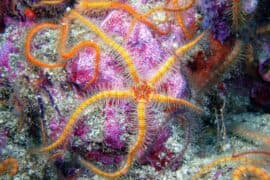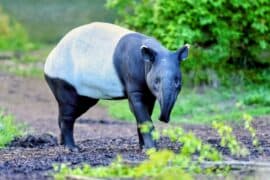Spea hammondii
(Spea hammondii)
Description
The western spadefoot toad (Spea hammondii) is a relatively smooth-skinned species of American spadefoot toad. Its eyes are pale gold with vertical pupils. It has a green or grey dorsum often with skin tubercles tipped in orange, and it is a whitish color on the ventrum. It has a wedge-shaped black spade on each hind foot. Adult toads are between 3.8 and 7.5 cm (1.5 and 3.0 in) long. Juvenile western spadefoot toads look similar to adults, but have more distinct spotting. Populations of Spea hammondii are localized, but widespread. It ranges throughout the central valley of California as well as the coast south of San Jose and some parts of the desert. The western spadefoot prefers grassland, scrub and chaparral locally but can occur in oak woodlands. It is nocturnal, and activity is limited to the wet season, summer storms, or during evenings with elevated substrate moisture levels. It is easily handled, with less skin secretions than similar toad species. Their secretions smell like peanut butter and may cause sneezing. The western spadefoot is experiencing some habitat loss, but is still common in its range and the population declines are very minor even though it is listed as "near threatened" in some counties of CA.
Taxonomic tree:







